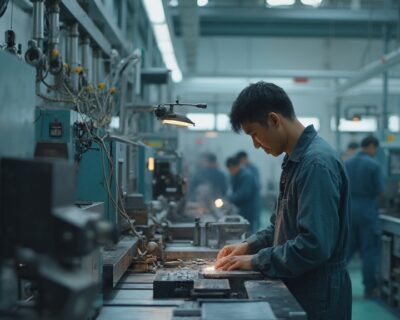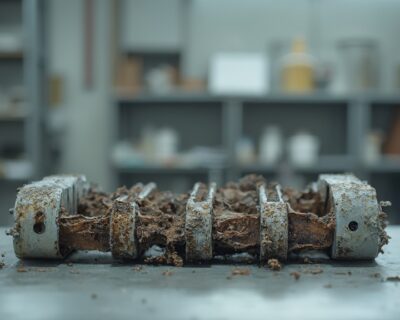Blogs

Mechanical Properties and Uses of A286 Material in Engineering
Introduction
A286, a high-performance austenitic stainless steel alloy, is revered for its exceptional mechanical properties and resilience under extreme conditions. Comprising primarily iron, with significant concentrations of nickel, chromium, molybdenum, and titanium, this alloy delivers unparalleled strength and oxidation resistance, even at elevated temperatures. A286 maintains impressive tensile strength and ductility, making it indispensable in demanding industries such as aerospace and cryogenic offshore engineering.
Its unique chemical composition and microstructure not only enhance its mechanical integrity but also provide superior resistance to electrochemical corrosion and hydrogen embrittlement. This article delves into the intricate details of A286’s chemical composition, mechanical properties, heat treatment processes, and its critical applications in advanced engineering, underscoring why it stands out as a robust choice for high-stress environments.
Chemical Composition
‘A286 is a high-performance austenitic stainless steel composition made mainly of iron, combined with notable levels of nickel (around 25%), chromium (approximately 15%), and lesser quantities of molybdenum and titanium.’. This particular mixture offers remarkable durability and oxidation resistance at high temperatures, rendering it very appropriate for challenging engineering uses. The alloy’s chemical composition is carefully crafted to improve its mechanical characteristics, especially its tensile durability and fatigue resistance, making it a sturdy option for application in harsh conditions.
The material’s ability to maintain an impressive strength of 325 MPa even at 1000°C, coupled with its excellent ductility over 25%, makes it a standout choice. ‘This high-heat performance is crucial for applications in modern industries like aerospace and cryogenic offshore engineering, where materials are required to endure a broad range of heat levels without significant degradation.’. Unlike standard ferritic and martensitic alloys that experience brittleness at reduced degrees, this material provides a balanced performance over a broad range of heat levels.
The metal’s superior properties are attributed to its unique microstructure and the activation of various deformation substructures at different temperatures. This makes this material not only resilient to high-temperature oxidation but also ensures high resistance to electrochemical corrosion, even in acidic environments. Such characteristics are vital for the integrity and longevity of structures in industries that handle hydrogen, as they face challenges like hydrogen embrittlement.
Overall, the remarkable blend of durability, ductility, and corrosion resistance under extreme conditions highlights its significance in advanced engineering applications, offering a dependable solution where traditional alloys are inadequate.

Mechanical Properties
The material exhibits exceptional mechanical characteristics, showcasing a tensile force of about 1,000 MPa (145,000 psi) and a yield force of roughly 760 MPa (110,000 psi) at ambient conditions. Its elongation percentage typically hovers around 30%, reflecting good ductility. These attributes remain stable even under high-temperature conditions, making this material an excellent choice for demanding environments. Specific heat treatments, such as aging, can further enhance its hardness. Significantly, the alloy’s capacity to preserve its integrity and strength in extreme conditions is crucial for advanced industries, including aerospace and automotive sectors, where materials must operate dependably across a broad spectrum of heat levels.

Heat Treatment and Hardening
The heat treatment process for A286 involves a two-step procedure: solution annealing followed by aging. ‘Solution annealing is performed at levels between 1050°C and 1100°C (1922°F to 2012°F), and this is immediately followed by rapid cooling.’. This phase is crucial as it dissolves any precipitates and homogenizes the alloy’s structure. Aging, conducted at levels ranging from 720°C to 800°C (1328°F to 1472°F), then optimizes the mechanical properties by precipitating secondary phases that enhance strength and stability. This meticulous process ensures that the material exhibits superior performance in high-stress applications, maintaining excellent mechanical integrity even at elevated temperatures.

Applications in Engineering
This precipitation-hardening stainless steel is renowned for its exceptional mechanical properties and resistance to oxidation. This mixture, composed of elements such as aluminum, copper, and niobium, is widely utilized in industries that demand high-performance materials, including aerospace, automotive, and chemical processing. A286 is frequently employed in applications where components are subjected to high temperatures and aggressive environments, such as gas turbine engines, exhaust systems, and fasteners. The alloy’s ability to withstand thermal stresses and corrosive conditions makes it an optimal choice for critical engineering applications. Moreover, its robustness is comparable to that of austenitic stainless steel, with the added advantage of enhanced strength due to its unique composition. This makes A286 an indispensable material in sectors that rely on components capable of enduring extreme conditions without compromising performance.
Conclusion
The comprehensive analysis of A286, a high-performance austenitic stainless steel alloy, highlights its exceptional attributes that make it indispensable in advanced engineering applications. Its meticulously designed chemical composition, featuring significant concentrations of nickel, chromium, molybdenum, and titanium, contributes to remarkable strength and oxidation resistance, even at elevated temperatures. This unique blend allows A286 to maintain impressive mechanical properties, such as tensile strength and ductility, under extreme conditions, proving its reliability for demanding industries like aerospace and cryogenic offshore engineering.
The alloy’s mechanical properties further emphasize its suitability for high-stress environments. With a tensile strength of around 1,000 MPa and a yield strength of approximately 760 MPa at room temperature, A286 exhibits excellent stability even under high-temperature conditions. The heat treatment process, consisting of solution annealing followed by aging, enhances its hardness and overall performance, ensuring that it meets the rigorous demands of modern engineering applications.
In summary, A286’s robustness, coupled with its resistance to oxidation and corrosion, positions it as a superior choice for critical applications across various sectors, including aerospace and automotive industries. Its ability to withstand thermal stresses and aggressive environments without compromising performance underscores its value as a strategic material for procurement managers seeking reliable solutions in high-performance engineering.




